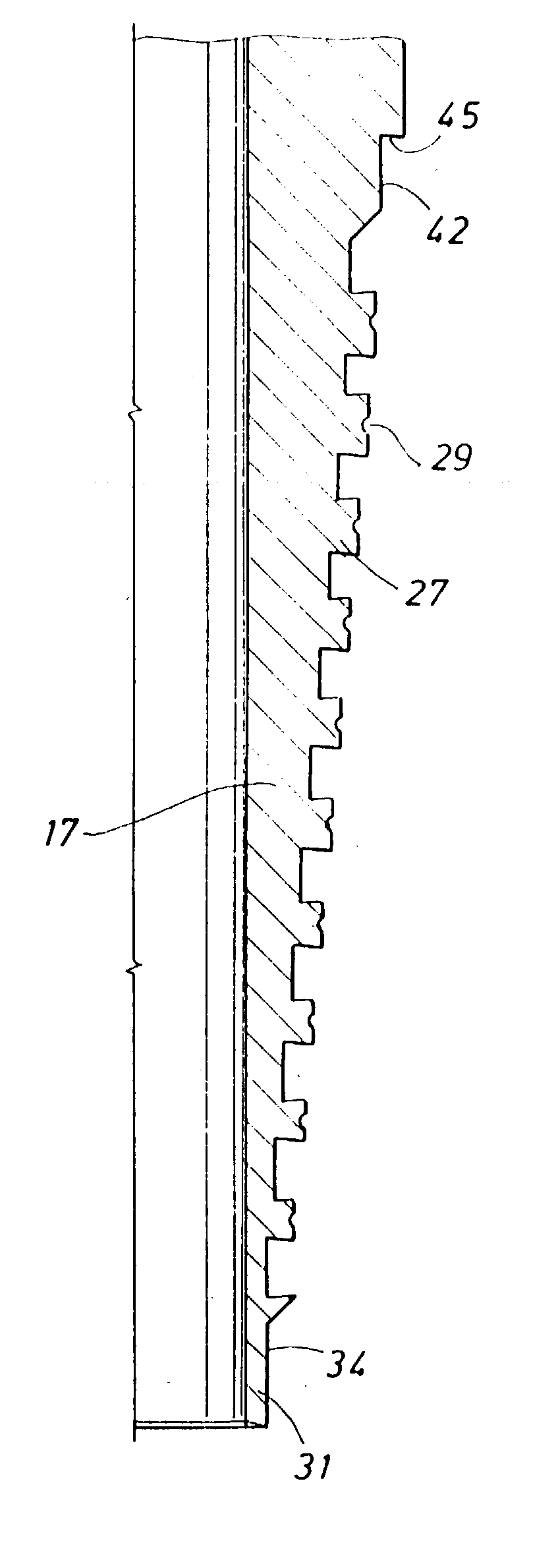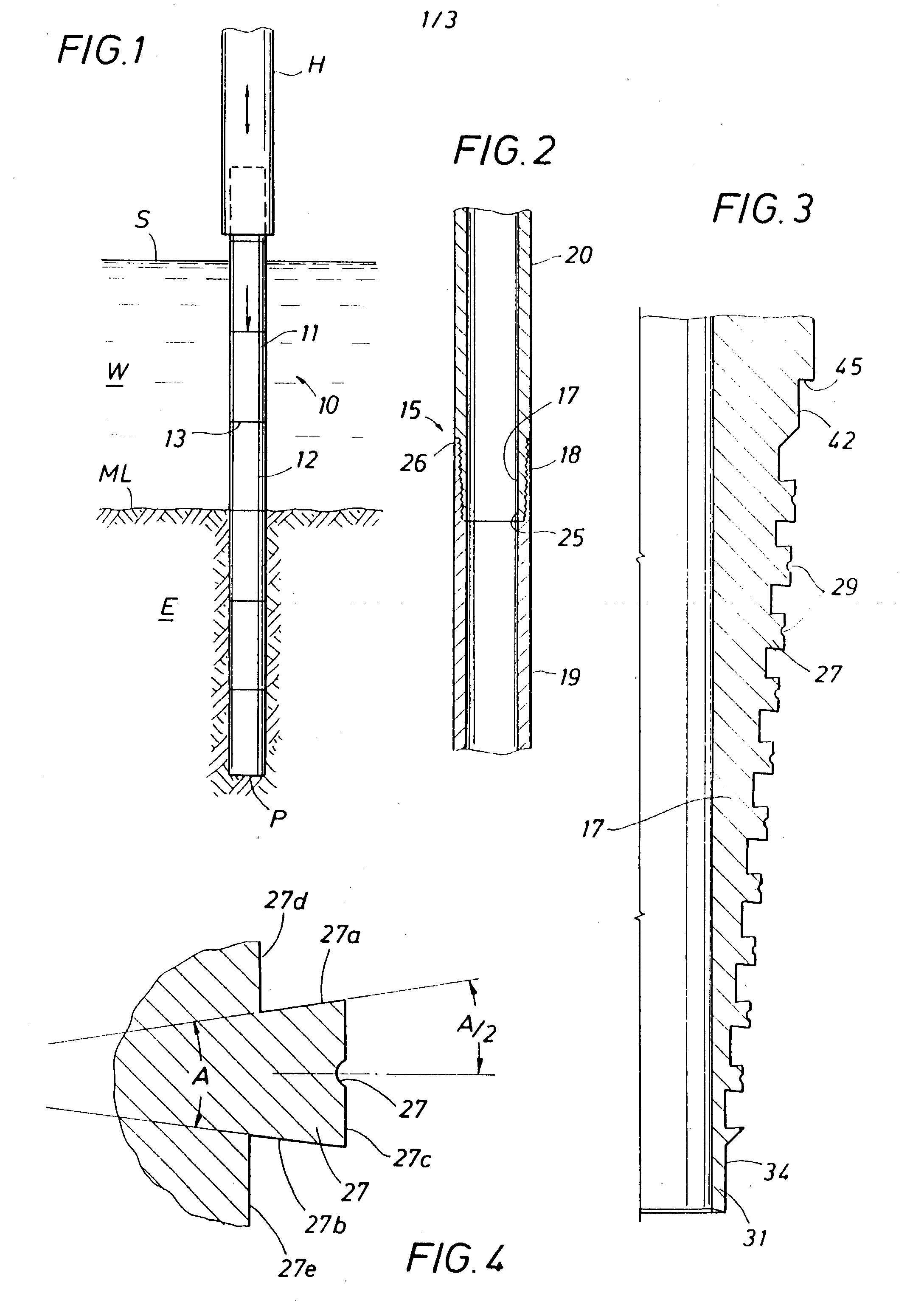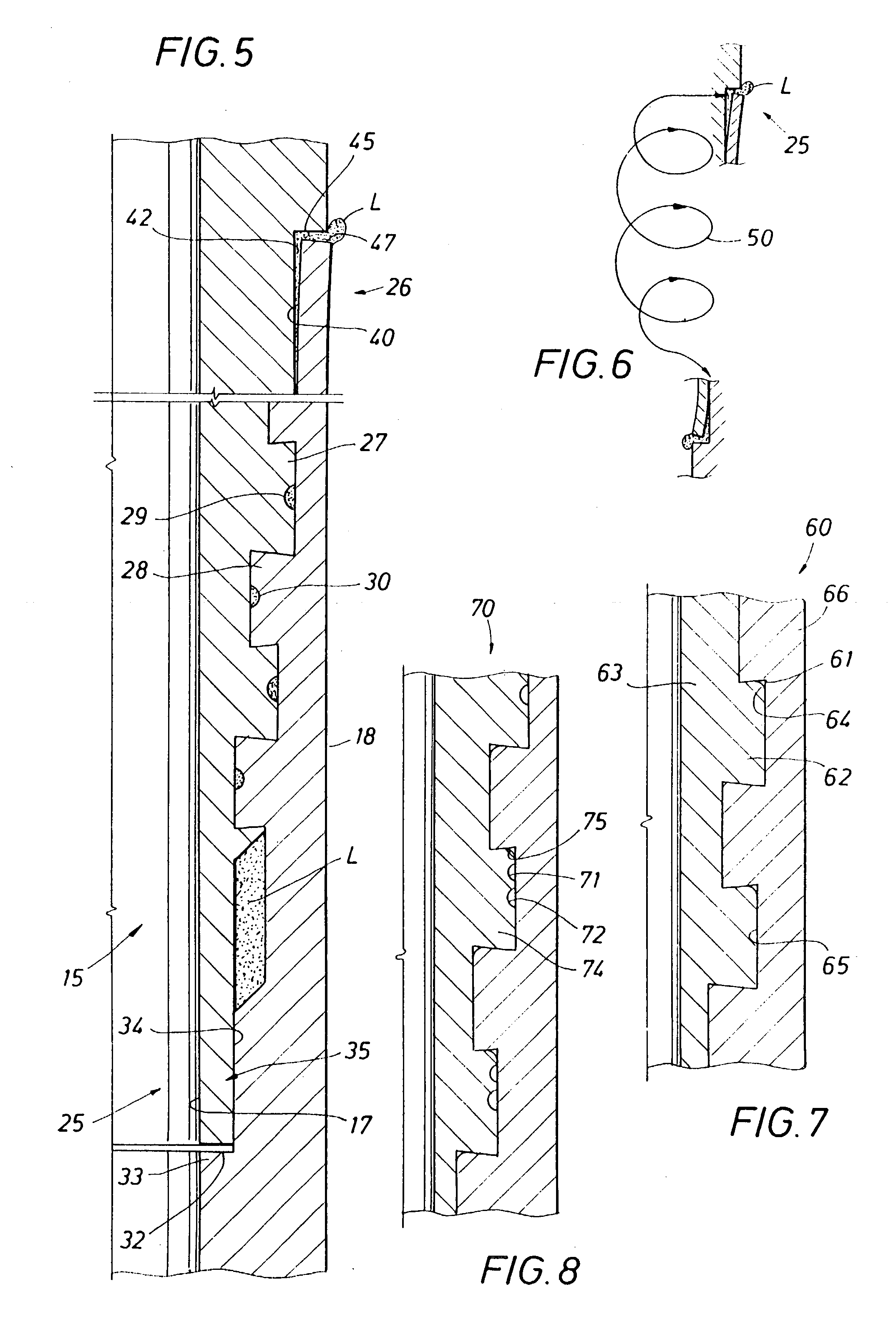While the thread lubricant performs essential purposes in threaded connectors, its presence in certain types of threaded connections can also present problems.
Assembly procedures and
impact loading can also compress the trapped thread lubricant causing extremely high hydraulic forces that can damage the threaded connection.
Certain desirable thread designs and thread forms are not readily employed in applications where trapped thread lubricant may be subjected to high pressures.
Wedge threads, dovetail threads, hooked threads and other complex thread forms that are well suited to perform desired mechanical holding and sealing functions in a threaded connector may be unsuitable for use in applications where trapped thread lubricant may become highly pressurized during the
assembly or use of the connection.
Highly pressurized lubricant can also be problematic in the connectors used to assemble impact driven
conductor pipe.
Jetting, however, is not always an available method of installing the conductor
pipe.
However, threaded or other mechanical connections used to secure conductor pipe sections together are not inherently resistive to repetitive,
impact loading.
For this reason, conductor pipes are not typically designed to withstand pressure differentials that may exist across the conductor wall.
However, as wells have become more challenging, the probability of a "kick" occurring in the conductor pipe has increased.
Such a kick may occur, for example, when the conductor pipe is driven into an abnormally pressured zone.
This combination of problems is of recent origin, having a genesis coincident with the advent of deeper, more challenging
offshore drilling.
Moreover, while there are some conductor pipes that use an external elastomeric seal to
restrict migration of
seawater into the connection threads where it could cause
corrosion or allow
corrosion cracks to develop, the use of
metal-to-metal seals for both an internal and external seal is not a common feature of conductor pipe design.
Conductor pipe connections designed to provide pressure tight seals using both internal and external metal-to-metal seals have an increased probability of encountering damaging stresses produced as a result of having high-pressure trapped lubricant in the connections.
Trapping an excessive amount of the thread compound between the internal and external seals can generate an enormous amount of
hydraulic pressure between the pin and box as the volume containing the trapped fluid is decreased during the thread engagement process.
High impact loads applied during hammering of a conductor pipe are transferred across the engaged threads and can also produce high hydraulic pressures between the components of the connection.
The stresses from
impact loading as well as the stresses induced by high hydraulic pressures between the connection components can cause a failure of the threaded connection in a conductor pipe.
Simple tight fitting thread forms do not offer adequate sealing when the pressures are high, especially when high temperatures are present.
One reason for this lack of universal acceptance by the end users of the pipe is that the wedging thread forms have uncontrollable makeup characteristics.
This is a very detrimental characteristic when trying to engage metal seal elements on the pin and the box because these elements are typically designed on a slight taper.
Therefore, if they are not accurately positioned relative to each other, they will not perform adequately when exposed to very high pressures.
The problem of unpredictable pin and box positioning when using wedging thread forms is due to several factors.
This tight fit can entrap lubricant to the extent that the lubricant can't escape during the makeup procedure, which can cause a hydraulic layer of lubricant to be trapped between the pin and box threads.
When this happens, the connection is further restricted from proper makeup position, which further hinders the proper engagement of the sealing elements.
A related problem resulting from
trapping lubricant within a threaded connection is that the hydraulic forces in the lubricant resulting during makeup prevent the pipe assembly process from being accurately monitored.
The presence of trapped thread lubricant in the connection can produce an abnormal torque reading relative to the made up position of the connection.
The thread modifications taught by the '411 patent can compromise the efficiency of a threaded connection, particularly those connections in which engagement of the thread flanks is an essential part of the thread design.
Formation of a recess in the root area of a thread can, however, concentrate stresses acting on the threaded connection, adversely affecting its strength.
 Login to View More
Login to View More  Login to View More
Login to View More 


